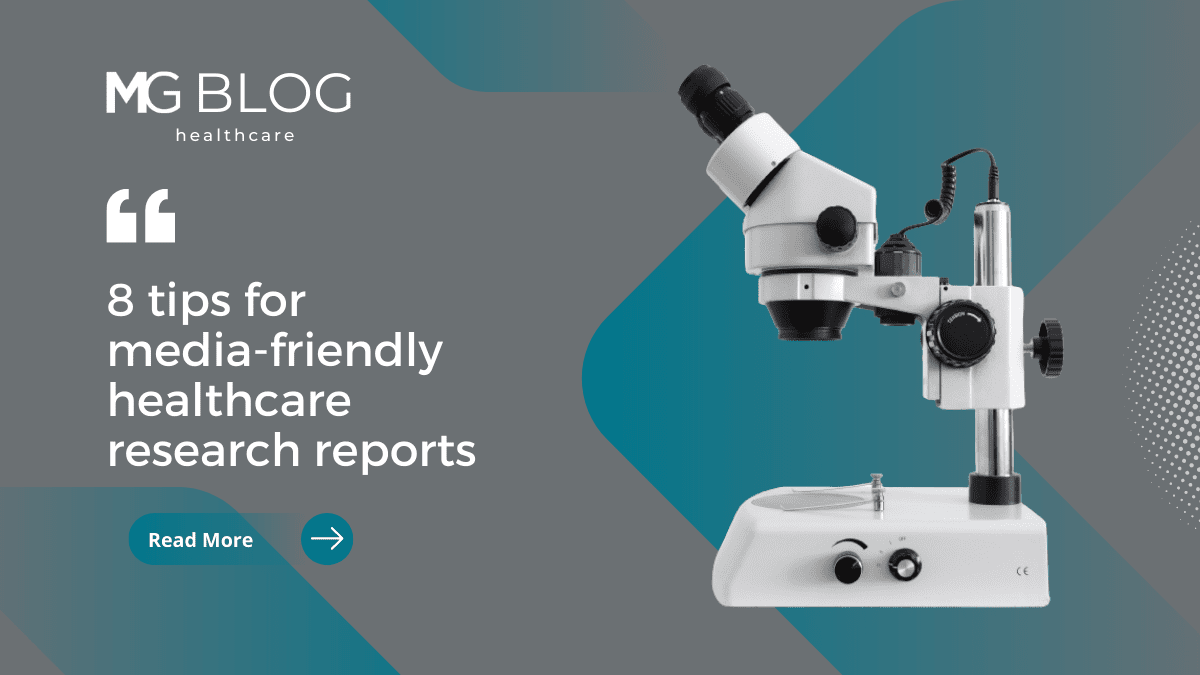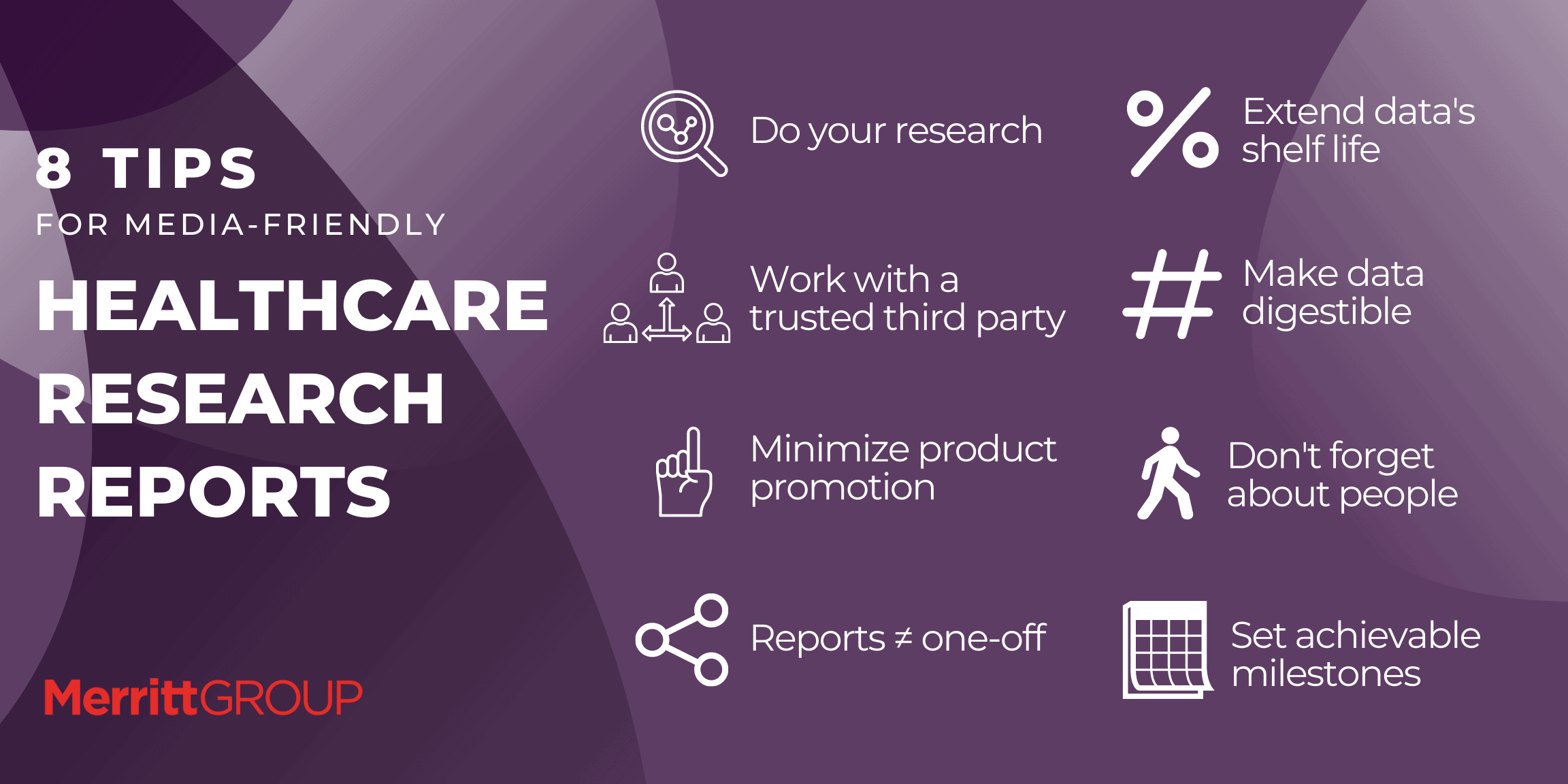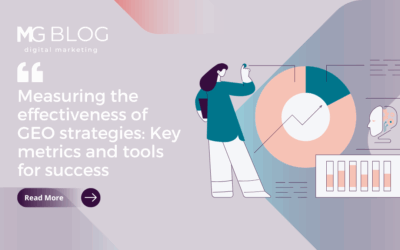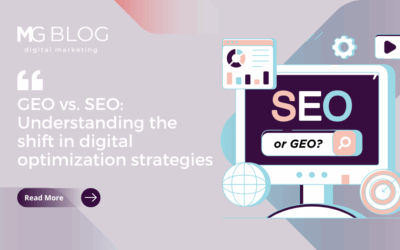
Two of the most important ingredients for a successful healthcare marketing and PR program stand on opposite ends of the spectrum — compelling human stories and high-quality data. As more healthtech and medtech companies look to contribute to the broader ecosystem of healthcare data, there are several things to consider that will separate “just another self-serving report” from a “landmark piece of industry research.”
There are certainly many technical factors that make data “high quality,” including sample size, collection methods and non-leading questions. There are also several other factors including “accuracy, completeness, reliability, relevance, and timeliness” that are more relevant to us as marketers and communicators when developing a research report.
When planning a strategy for generating a research report, here are several tips that marketers should consider for effective development:
1. Do the research on your research.
Before developing a report, perform a comprehensive audit on research already published in the space. Ask yourself questions like “Is this topic timely?”, “Are we approaching it from a unique perspective or new slant?”, “When (if at all) was the last time someone explored this topic?” and “What will this offer to the industry that is new?” Creating a report for the sake of checking a marketing box is a waste of your team’s limited time and budget resources that could be used better elsewhere.
2. Work with a trusted third party.
If budget allows, partnering with a neutral third-party organization (rather than developing the report internally or with another commercial partner) goes a long way toward elevating the quality and reception of a report. Even some analysts and research firms are viewed as more credible in the market and by the media than others, so do your research before wading into a joint initiative. If possible, consider partnering with a university or industry body such as HIMSS or AHIP that has a content or research arm in order to uplevel your research’s credibility.
3. Ease up on product promotion.
Our job as marketers is to help sell a product or service but when it comes to developing a report, take a step back, think about the bigger picture or problem and resist the urge to blatantly push your company. In order to add to the industry conversation in a truly meaningful way, reports need to be about solving real and big problems, not selling a product. Taking a more neutral approach and positioning your company as thought leaders (rather than salespeople) will pay off in the long term when others are referencing your unbiased research for years to come.
4. Don’t treat reports as “one-offs.”
Treating reports as standalone assets or one-off announcements does injustice to the time they take to develop and represents a missed opportunity for other practices outside marketing. In parallel to developing the report itself, think about building a three to six-month campaign around it — including PR stories in advance of publication that speak to the market’s need for this type of research and media opportunities after launch in the form of commentary on the big takeaway. Reports should also be thought of as sales enablement materials, used to fuel demand generation and leveraged as social media fodder for months or even years to come. Develop reports to be tentpole pieces of content, with supporting PR and marketing materials around it.

5. Extend your data’s shelf life.
Explore ways to slice and dice data to use it, reuse it and keep it visible longer. Depending on the depth, complexity and salience of your research and the high-level conclusions you draw from it, consider breaking it into a two-part report. This allows you to nurture the industry’s interest, or collect initial feedback and offer more context in part two.
6. Make data digestible.
No matter who you are trying to reach, whether it is health system C-suites, physician practices and individual providers, investors or patients themselves, quality data doesn’t have to mean complicated data. In fact, the most impactful data is understandable to the widest audience. Another way to make data even more digestible is to create visualizations and graphics that catch readers’ eyes and tell a story.
7. Don’t forget about people.
At the end of the day, any meaningful analysis will speak to the real-world impact on people…whether patients, clinicians, healthcare staff, caregivers, families, etc. As part of any campaign you develop, don’t forget to also highlight (and offer as part of any PR or marketing outreach) real humans who can share their perspective or experiences as it relates to the topic. These voices are critical to bringing real dimension to statistics (and also attracting the interest of top-tier reporters).
8. Set achievable milestones.
Finally (and very tactically), give yourself the time you need to create a report that is comprehensive, complete and high-quality. Rushing the process, hastily drawing conclusions, cutting corners in a media kit and asking PR teams to start pitching before they have a full picture will only diminish its ultimate impact and yield disappointing coverage. However, keep things moving along. If you move too slowly, you might get beaten to market or your data might become stale. Make a realistic timeline when planning out your approach.
Looking for a partner to help you develop and amplify a healthcare report? Our healthcare PR and marketing teams are here to help you through the process.



